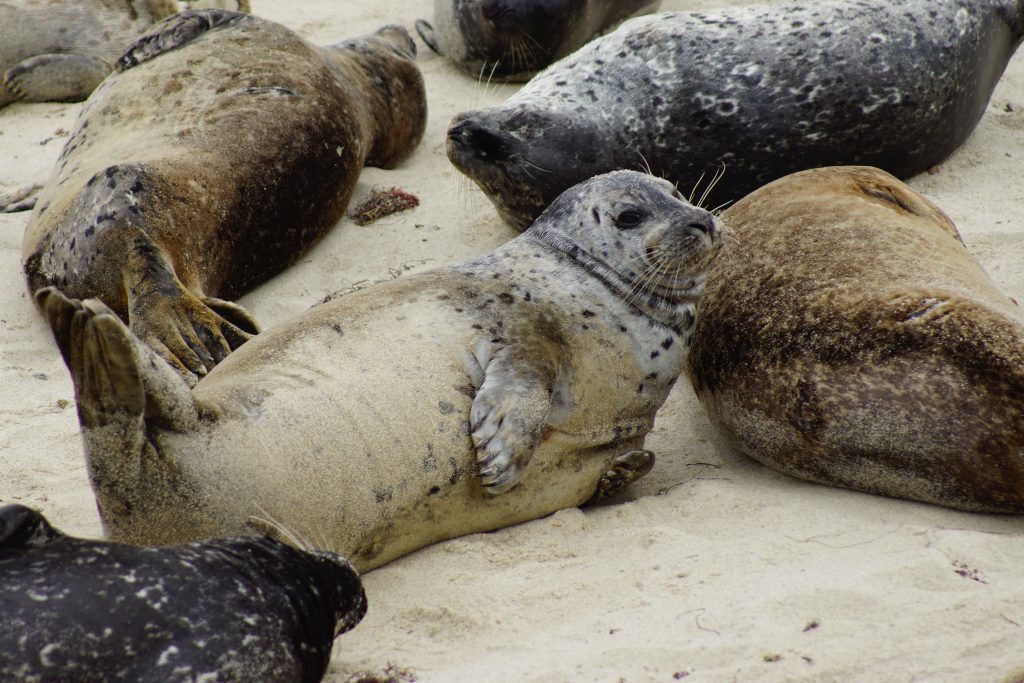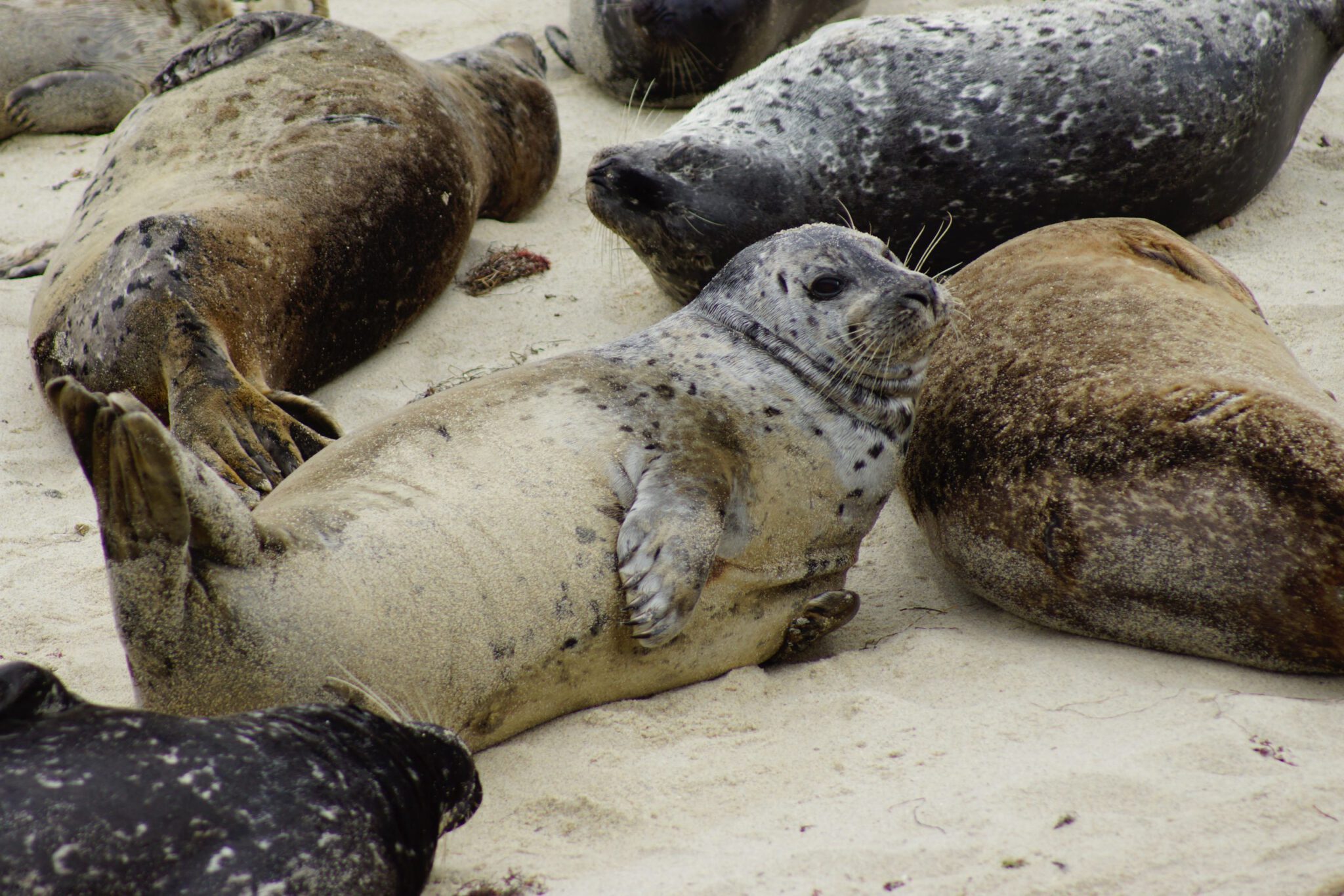The picturesque yet rugged coast of La Jolla is a thriving ecosystem that supports an abundance of diverse animals that can be found both in and out of the water.
From the boisterous sea lions on Point La Jolla to playful dolphins catching waves alongside the surfers, La Jolla’s coast is a playground for the animals that call it home and for wildlife enthusiasts who love to watch the animals of La Jolla in their element.
Whether you are a seasoned wildlife watcher or a curious traveler seeking an unforgettable experience on the coast, we’ll help you get to know the true celebrities of this town, the animals of La Jolla.
In this guide, you’ll come away with fun facts about each animal, where you can see them, the best time to visit, plus some tips and best practices for viewing wildlife.
1. Harbor Seals
Photo by Larry Costales on Unsplash.
The seals and sea lions in La Jolla could both be local mascots. They belong to the pinniped family as they are both “wind-footed.” They attract over a million visitors to the area annually, with most people unlikely to have seen them in such large numbers before.
You can see the harbor seals at the iconic Children’s Pool, aka Casa Beach, on the coast of La Jolla. Historical records show that the seals have used Casa Beach since the 1880s to rest, soak up the sun, and raise their babies.
Today, groups of seals, up to 200 or more, call this area home, so much so that they deemed it an official seal rookery in 2001.
From December 15 through May 15, Children’s Pool Beach closes during the seal pupping season, so seal mammas and babies can be free of disturbance and stress.
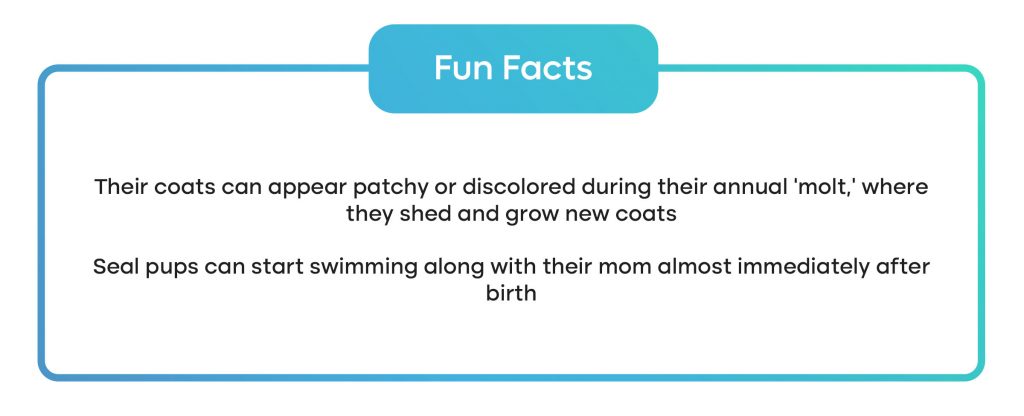
2. California Sea Lions
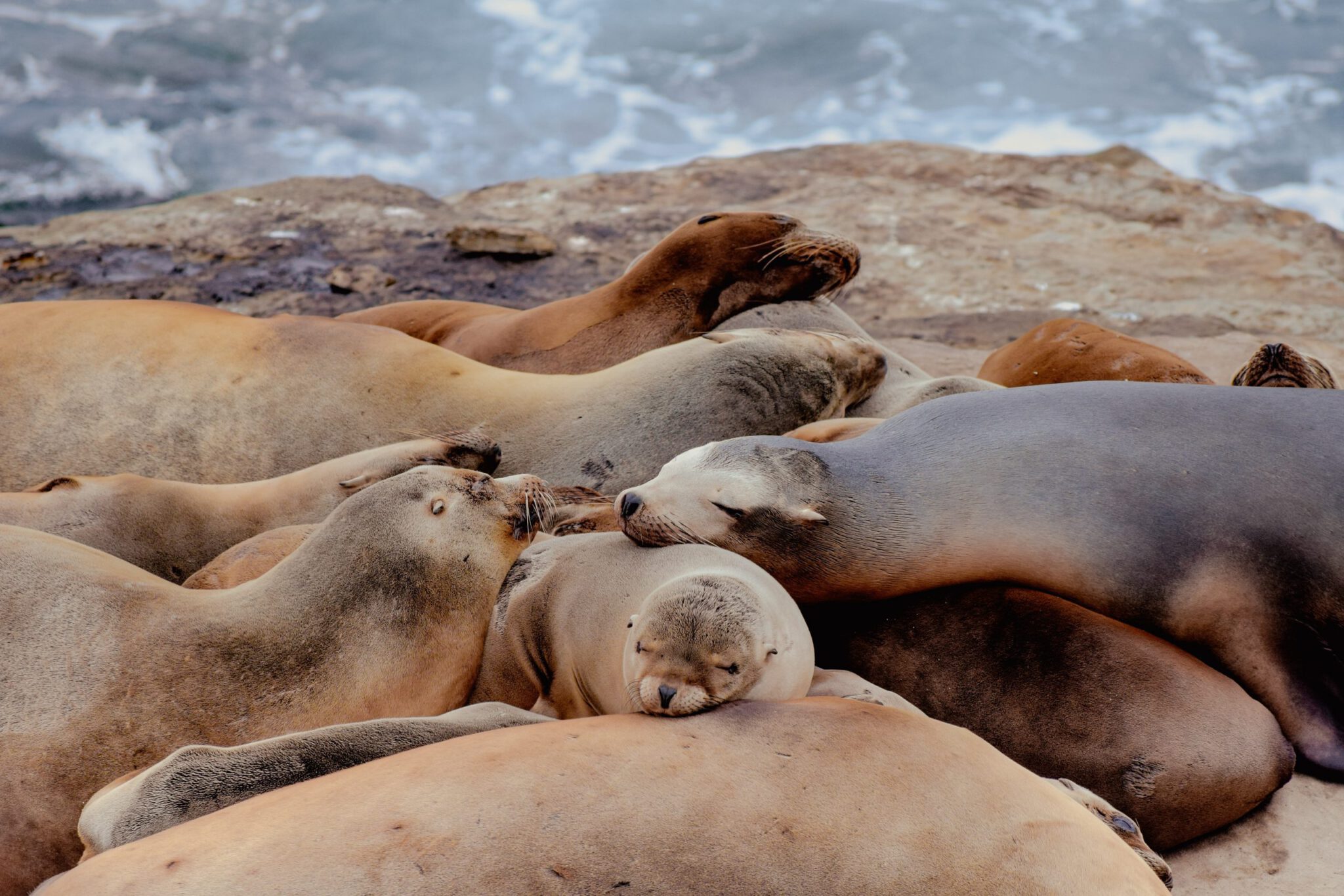
Photo by aestelle on Unsplash.
The California Sea Lions will lead you right to them. Just follow the loud barks coming from La Jolla Cove. The sea lions occupy a prominent coastal landmark in La Jolla Cove called Point La Jolla.
The rugged rocks of Point La Jolla are no problem for the sea lions. They climb atop the rocks, taking over every corner and ledge to pile up together.
Point La Jolla is protected during the sea lions’ pupping season, between May 1 and October 31, when the area is closed to the public. However, visitors are welcome to enjoy watching the sea lions from up on the sidewalk, always maintaining a safe distance from these large sea mammals.
The San Diego Seal Society encourages visitors to review the viewing guidelines before visiting the seals and sea lions.
California sea lions primarily feed on fish and shellfish, including codfish, mackerel, and squid, to name a few.
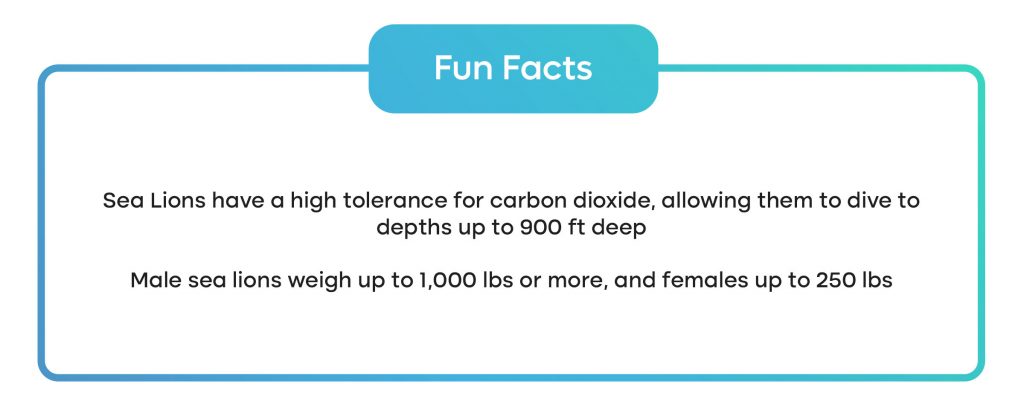
Seals vs. Sea lions
Seals and sea lions are often confused but have distinct features for identification.
Here are some of the easiest ways to tell apart seals and sea lions:

3. Black Cormorants
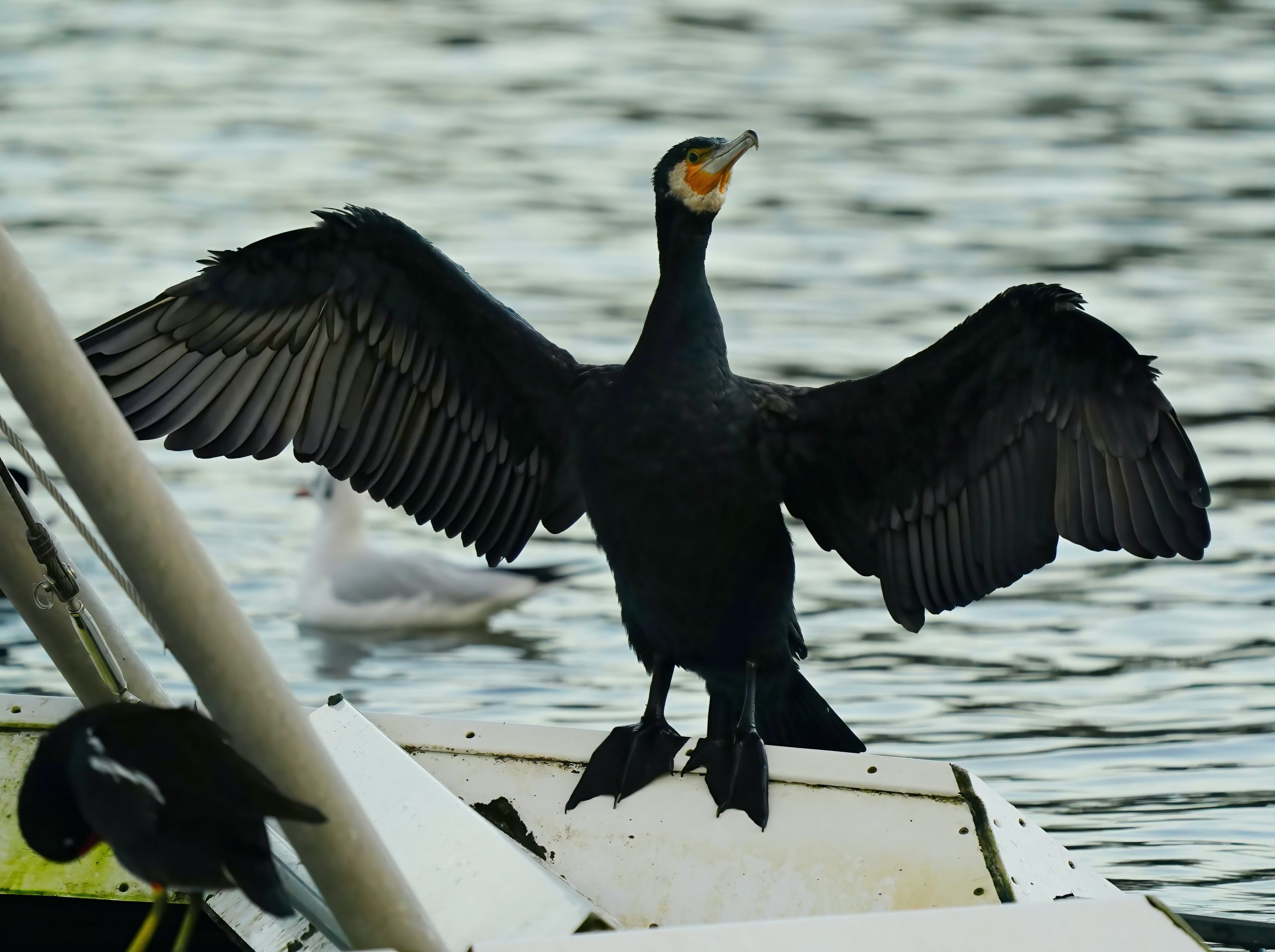
Photo by Martin Wemyss on Unsplash.
The black cormorant is a social bird often seen with its colony on the cliffs overlooking La Jolla Cove or gliding gracefully above the water’s surface.
In the early morning to afternoon, you can spot the black cormorant diving and swimming underwater for extended periods in search of fish.
Their sleek black feathers are waterproof, helping them stay buoyant as they zip quickly through the water. Their webbed feet allow them to maneuver with speedy precision, and their sharp beaks hook their prey better.
La Jolla Cove is the hub for cormorant activity, where you can watch these seabirds in action in their natural habitat.
You can best see them by walking along the Coast Walk Trail or through binoculars if watching them from a greater distance. You may see them with their wings outstretched as they dry out their wings after a dive.
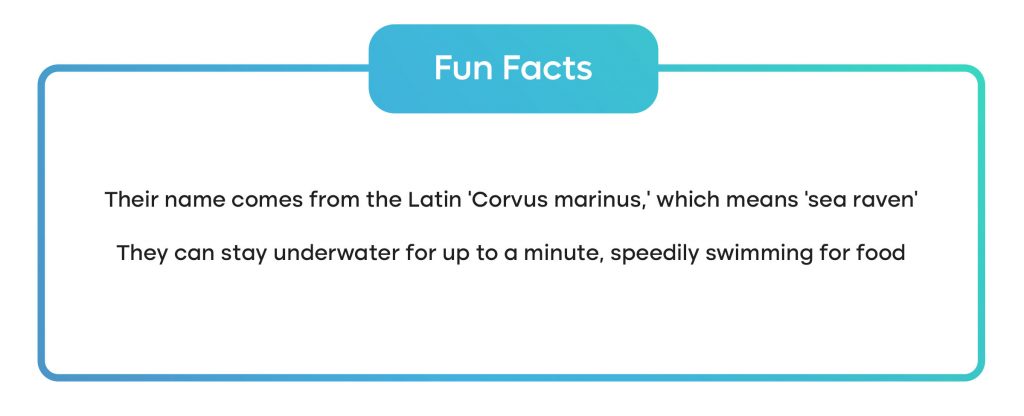
4. Pelicans
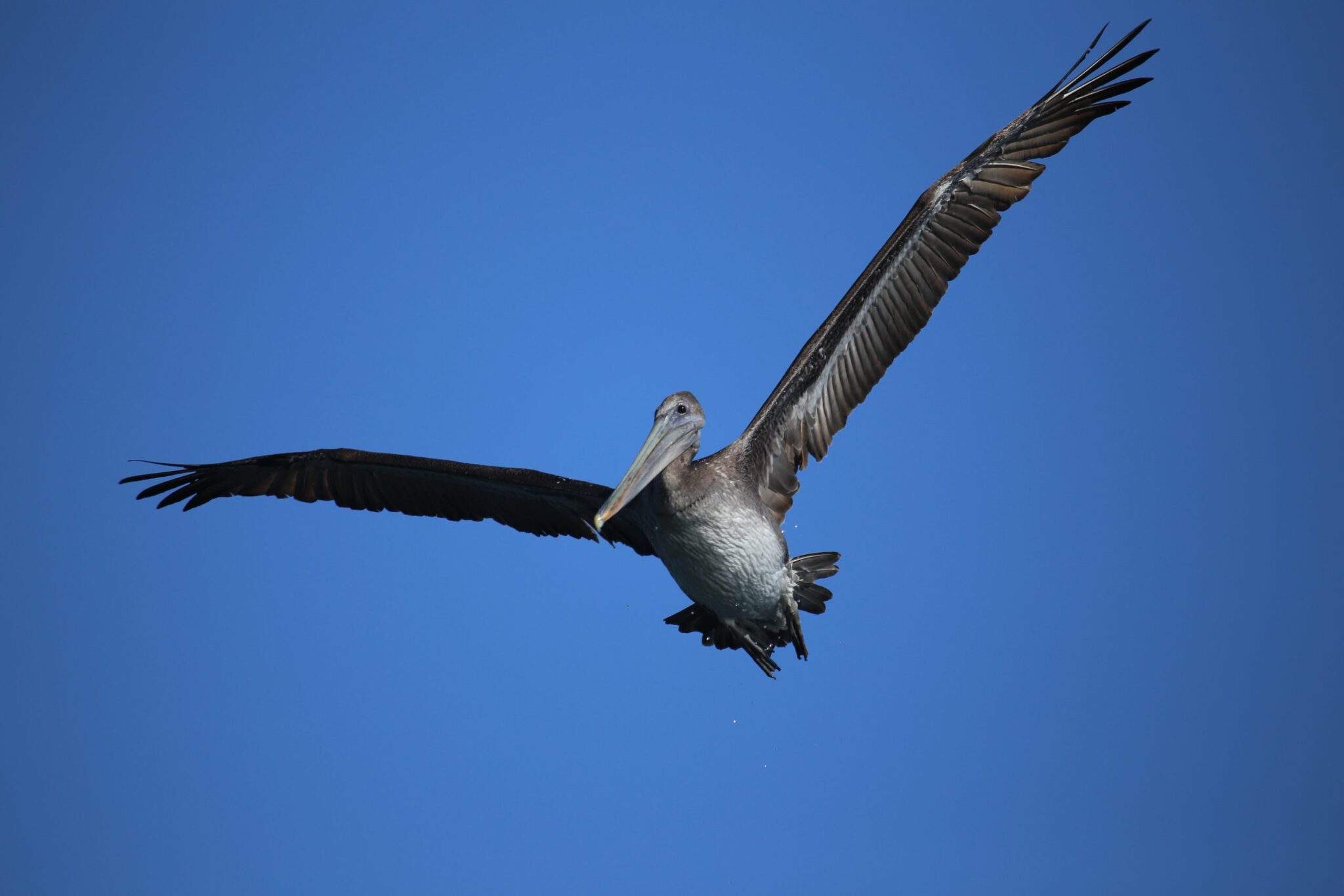
Photo by NOAA on Unsplash.
While exploring La Jolla’s coast, you’ll likely encounter these charismatic birds in the skies and waters.
California Brown Pelicans show a blend of brown and gray, while White Pelicans have an all-white appearance and large orange bill.
They both have long, thin necks, long bills, and stretchy throat pouches to scoop up fish with. After diving in torpedo-like fashion from heights 60 ft above the water, brown pelicans use their webbed feet to help them swim.
White pelicans prefer to gather in groups, surrounding fish and scooping them into their pouches from the water’s surface.
These prehistoric-looking birds can have wingspans between 6 and 7 ft. You’ll often see them gracefully flying inches above the water’s surface in a line.
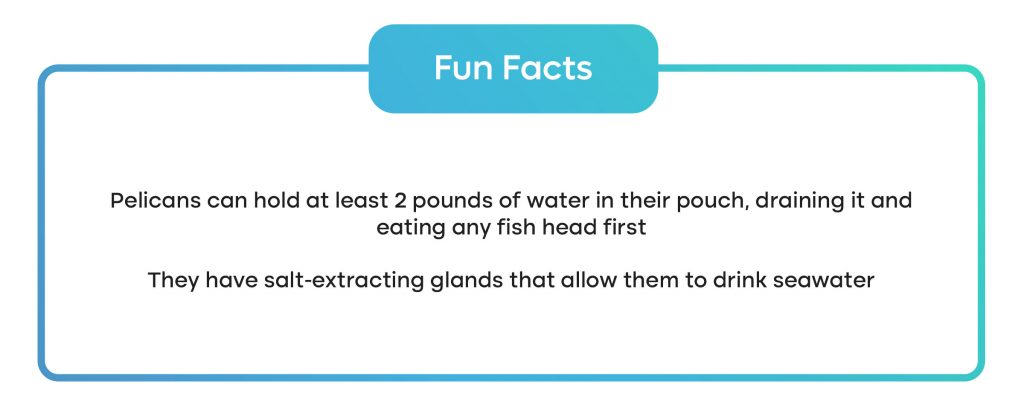
5. Seagulls

Photo by Jeremy Thomas on Unsplash.
The most recognizable shorebird off our coast would be the outgoing, sneaky, and glutenous California seagull.
Adult seagulls are white-headed, with a medium gray back, and spotted white and yellow beaks with a red spot on the lower bill.
Any local can tell you a story about a seagull that boldly stole food, no matter how well they secured it. Some report having food snatched right from their hand!
Seagulls display this type of opportunistic feeding behavior all the time. They know exactly what they are doing.
You may also notice seagulls flying close to pelicans, the better hunters, to snatch any fallout from the pelicans’ efforts.
These are intelligent and social birds, with colonies sprinkled along the coast of La Jolla.
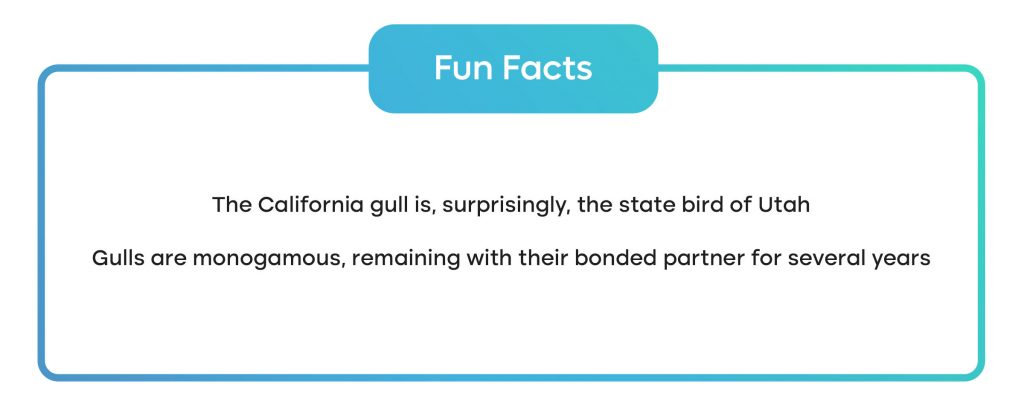
6. Leopard Sharks
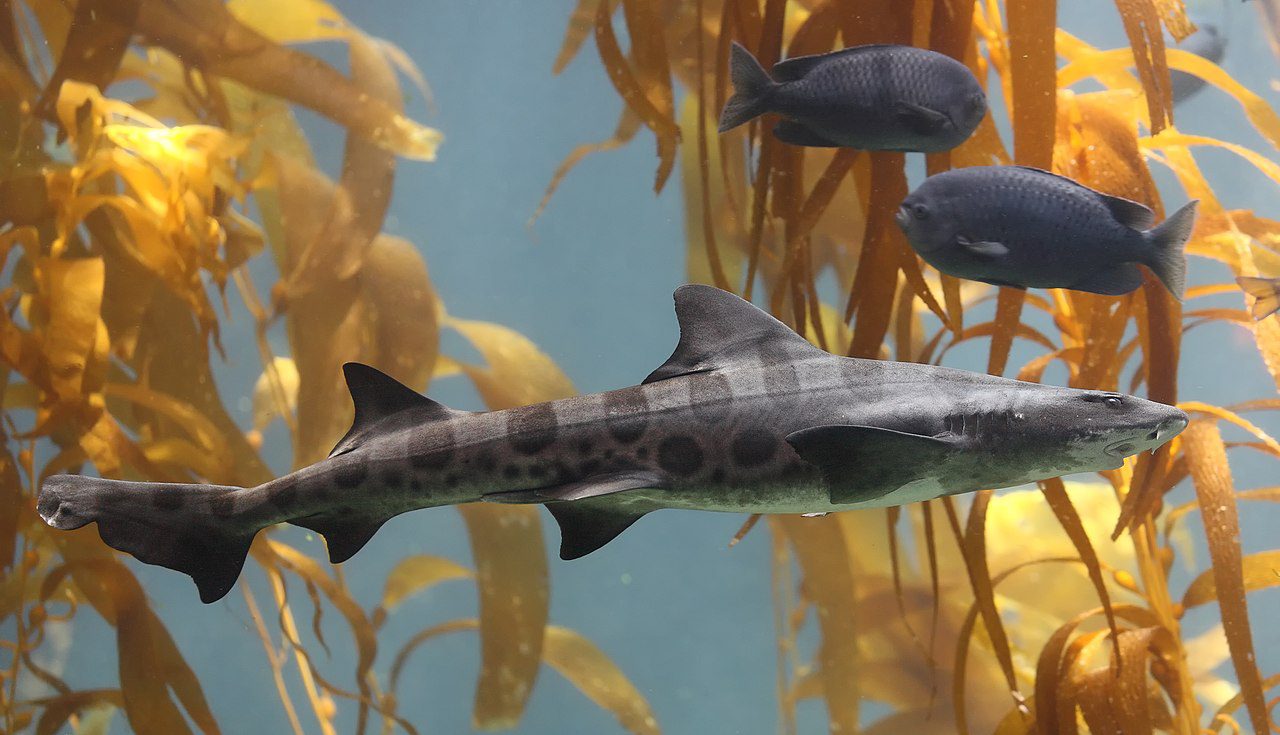
Photo by Matthew Field on Wikimedia Commons.
Eager to get closer to the animals of La Jolla? Consider wading in the water with hundreds of leopard sharks. From June to September, leopard sharks gather in large numbers for their breeding season.
Just off La Jolla Shores Beach is a favorite spot of theirs, where the waters are shallow, and the water temperatures are warmest. Leopard sharks have a slim shape and dark oval spots, similar to a leopard, hence the name. They have a flat head, short, rounded snout, two dorsal fins, and eyes positioned laterally on their head. They are typically 4 to 5 ft long.
Watch the tide charts for the best chance to walk or swim amongst the leopard sharks. Leopard sharks move closer to the shore as the tide rises and retreat to deeper water as the tide goes out.
Leopard sharks have a docile temperament and are non-aggressive toward humans. This makes them the most harmless shark species. However, they will respond if provoked or harmed, so keeping a respectful distance is best.
The leopard shark is one of the few animals of La Jolla that gives snorkelers, divers, and swimmers a chance to get closer to wildlife safely. When not hanging out in the shallower waters, look for them in the giant kelp forests or around reefs.
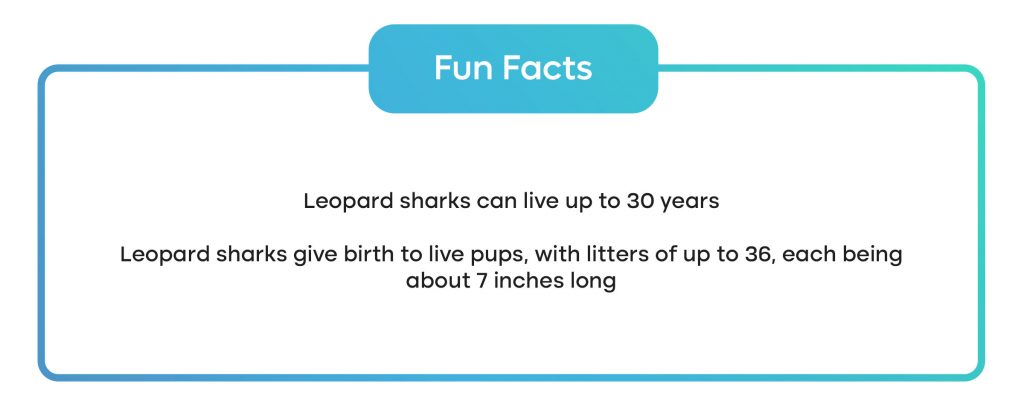
7. Horn Sharks
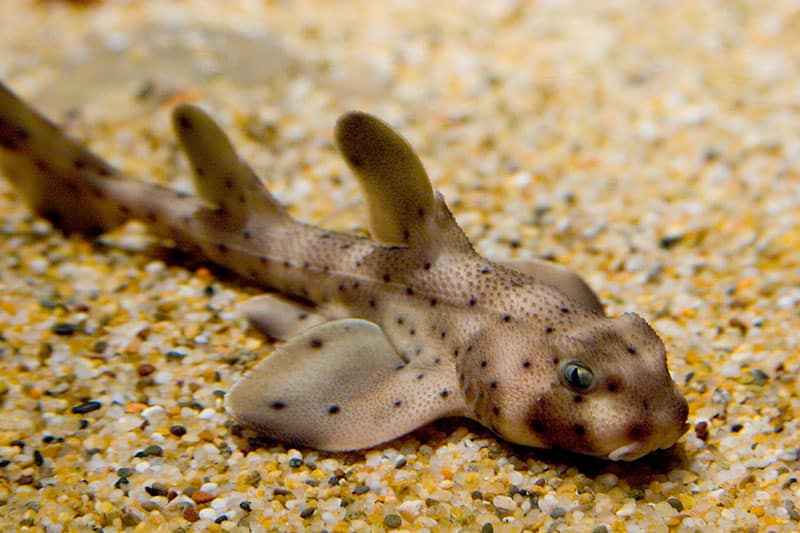
Via AZ Animals
The small and elusive horn shark prefers to stay in the shadows of shallow waters, using rocky reefs, caves, ledges, and kelp forests to hide.
The best times to spot them are night dives or early mornings when they are still active.
Horn sharks have horn-like spines, stout bodies, small dark spots, and prominent ridges above both eyes.
They also have a unique way of getting around using their fins to crawl across the seafloor. Horn sharks are slow-moving fish, looking somewhat sluggish, but this is normal for them. They can, however, pick up the speed to catch their prey or evade a predator.
The horn shark is a bottom feeder, enjoying a diet of crabs, shrimp, and lobsters, but will also enjoy sea urchins, mollusks, and other small fish.
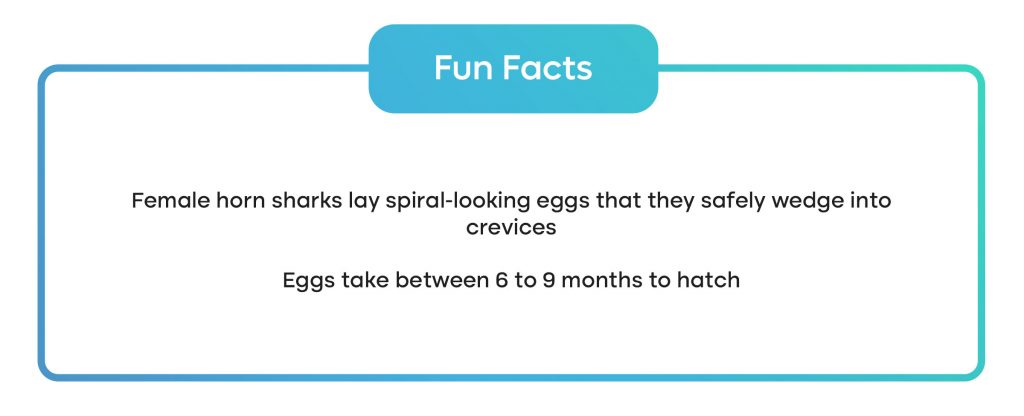
8. Dolphins
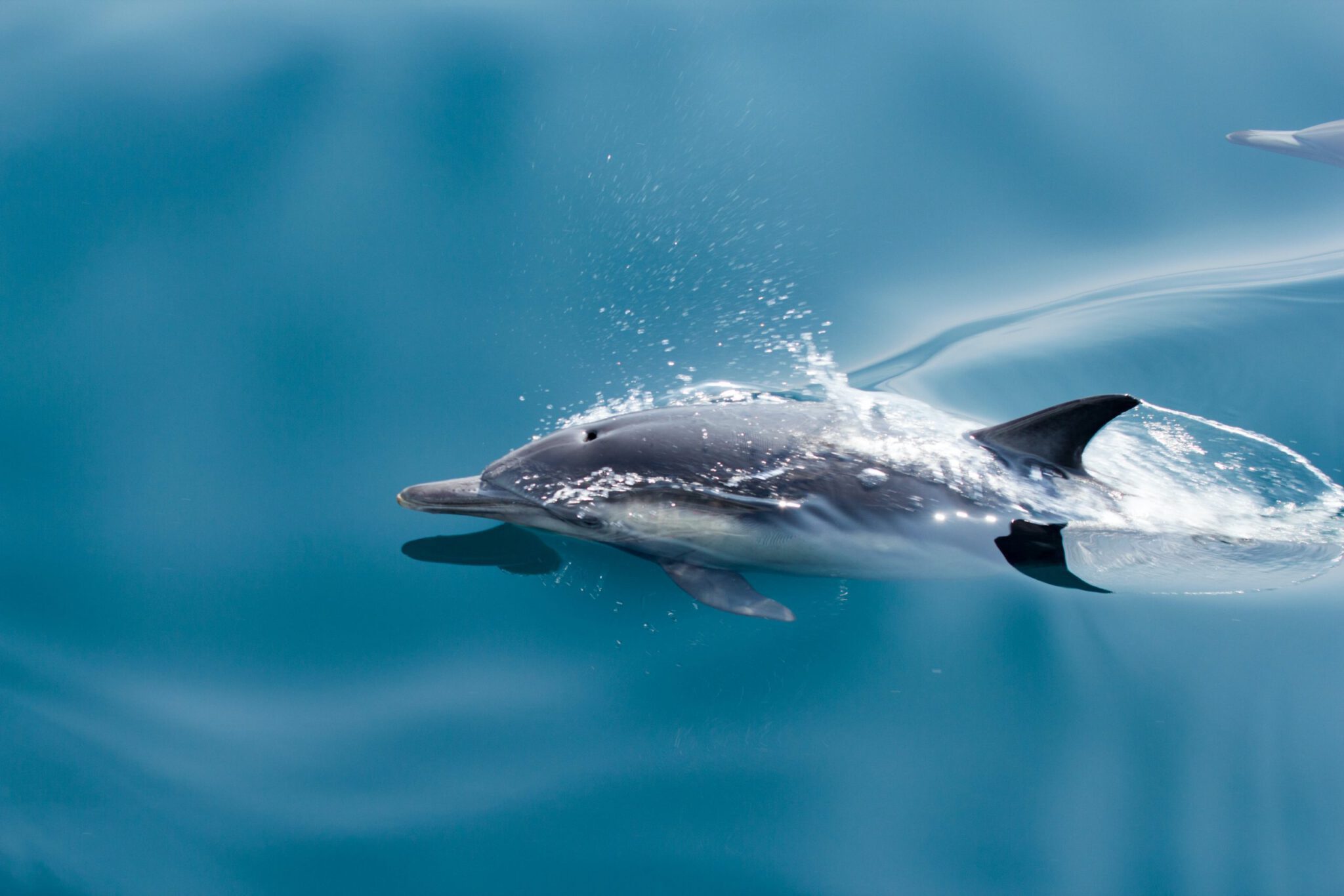
Photo by Guido Hofmann on Unsplash.
Dolphins make the list of the most playful and energetic animals of La Jolla, hands down. The two types of dolphins commonly seen off the coast of La Jolla are the common dolphin and the bottlenose dolphin.
Dolphins are highly intelligent, communicating through squeaks, whistles, clicks, and body language.
They use echolocation to find objects and get information about them. They project their unique noises into the water, traveling like sound waves. When the projected sounds find an object, it returns important information to the dolphin, such as size, shape, speed, and location.
The Common Dolphin
The charismatic common dolphin is active year-round in La Jolla, swimming through La Jolla Cove. The common dolphin is smaller, measuring under 6 ft. They have shorter beaks and an hourglass-looking color pattern. A darker gray extends across their forehead to tail, and a patch of yellowish beige on the underside.
Since these dolphins are highly social, they’re found traveling in pods or groups of 2 to up to 30. Mega or super pods, which can have 10,000 or more dolphins, have passed San Diego’s coast. It’s an incredible event to witness.
Typical dolphin behaviors include “bow riding,” where they swim alongside the bow of boats. They leap out of the water at high speeds and show off their mid-air somersaults. It’s quite an exciting performance.
The Bottlenose Dolphin
The bottlenose dolphins like to show the surfers how it’s done. They’re commonly seen catching epic waves off Black’s Beach, giving surfers an extra special thrill.
Their bottle-shaped nose gives them their name. They are also entirely gray, fading from a dark gray on the back to a lighter gray underside. They have a tall dorsal fin and a slightly upturned mouth, giving them that smiley, friendly expression.
The bottlenose dolphins are larger, measuring between 6ft and 12 ft long, sometimes weighing over 1,000 lbs.
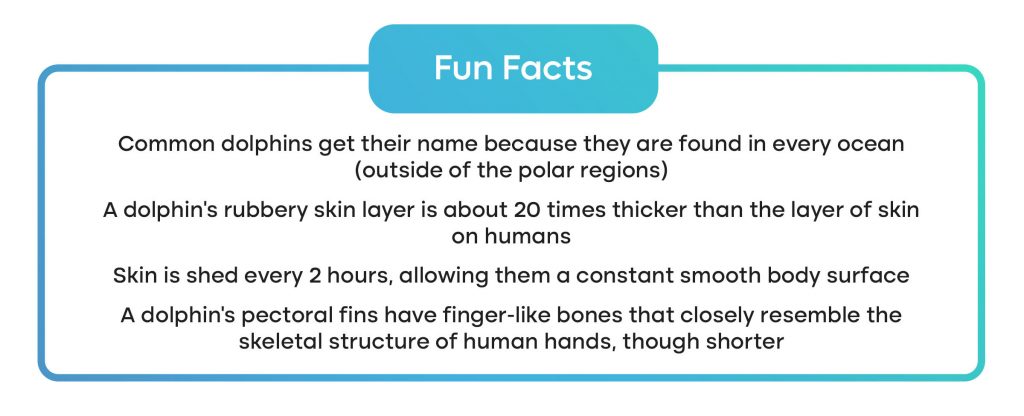
9. Garibaldi Fish
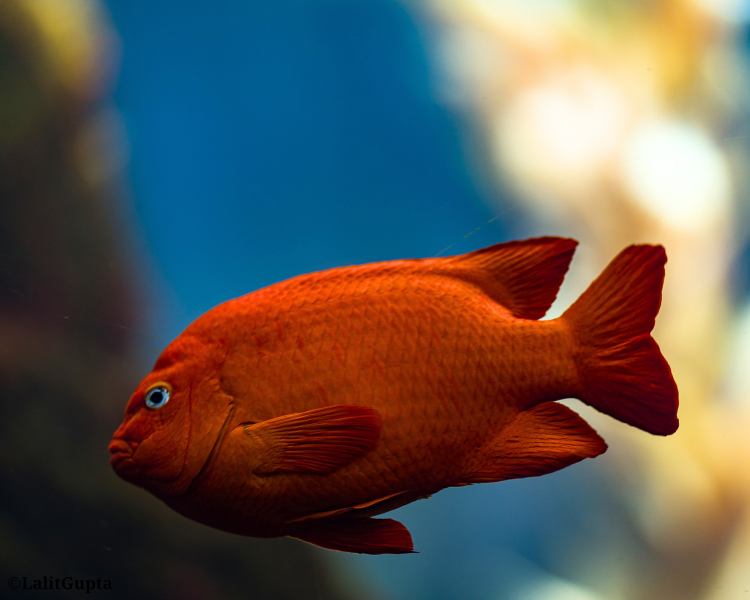
Photo by Lalit Gupta on Unsplash.
So far, our list of wildlife animals of La Jolla has yet to include many colors, until now, and it is California’s state marine fish.
The Garibaldi fish brings its vibrant orange color to the mix and perfectly pops against the ocean hues of blue and green. Their orange appearance gives them away, but you’ll also know you’ve seen one by their heart-shaped tail. A young Garibaldi is an especially exciting sight because of their bright blue spots.
Look for the Garibaldi’s orange glow near rocks, caves, and crevices. You may even spot them swimming right below your kayak!
They are feisty fish who are territorial and will quickly move to defend themselves if they feel threatened.
The Garibaldi diet includes sponges, algae, crustaceans, tubeworms, and other small marine invertebrates.

10. Grunion
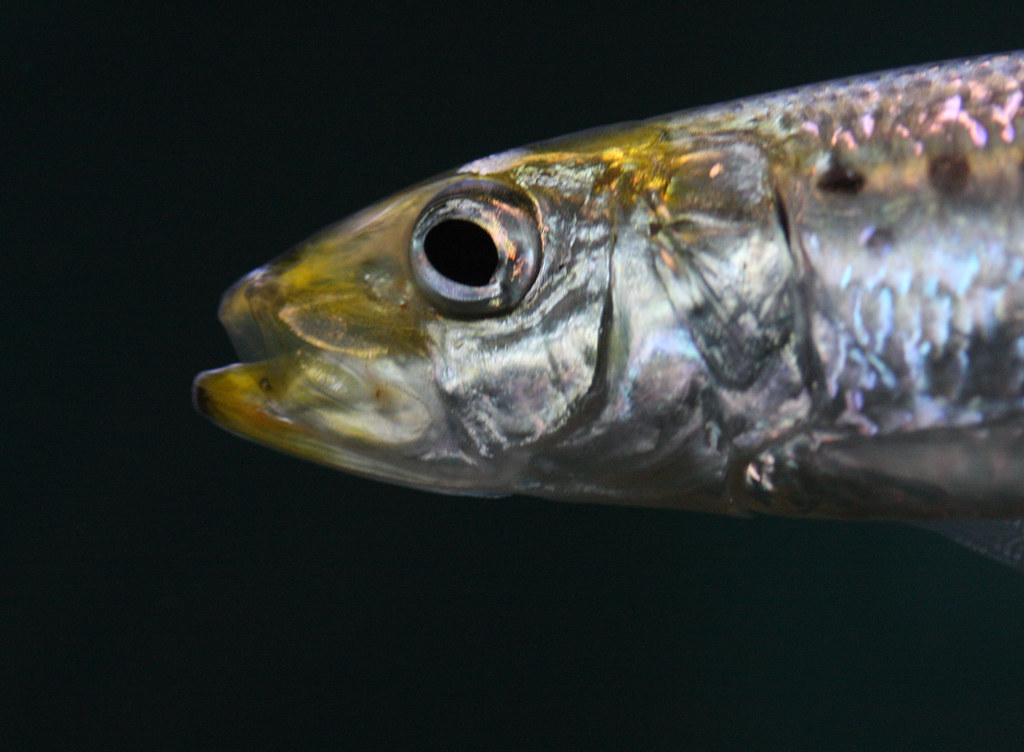
Photo by Nathan Rupert on Flickr.
The California grunion is a slender fish famously known for its unique breeding behavior.
During the spring and summer, grunions cover the beach by the thousands after being pushed up the beach with the high tide. Once coming up with the high tide, they twist and dig their bodies halfway into the wet sand to lay their eggs.
Males will curve around the female to release ‘milt,’ fertilizing the eggs. The eggs incubate in the sand for about ten days until the next high tide cycle carries them out.
The ‘grunion runs’ occur over specific times each night between March and September. Bring hot coffee or tea because the runs happen late evening between 9 pm and 1 am at the beginning of the full and new moon cycles.
The grunions breeding cycle is so consistent that officials can predict up to a year in advance when they are due on local beaches.
The California Department of Fish and Wildlife releases a schedule that includes days and times so visitors can plan.
The CDFW advises observers to use light sparingly, as direct light could scare the fish, detecting them from coming ashore. A sport fishing license is required for anyone over 16 who wants to catch grunion.
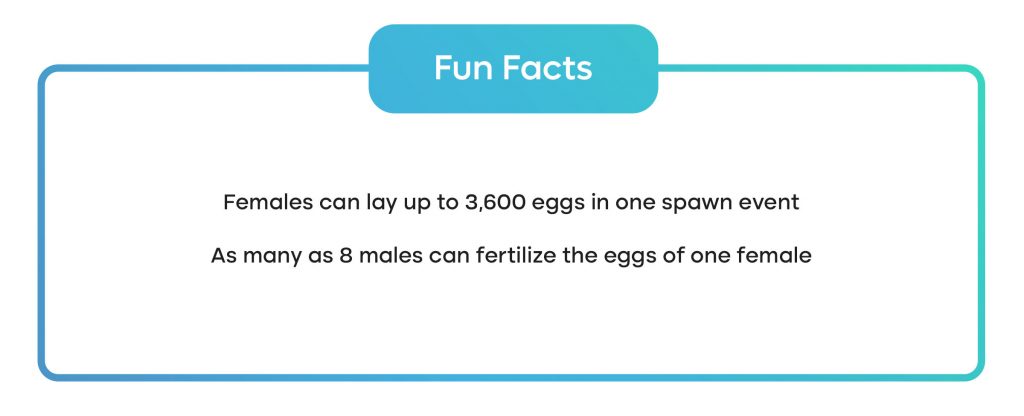
The Underwater Park and Ecological Reserve in La Jolla
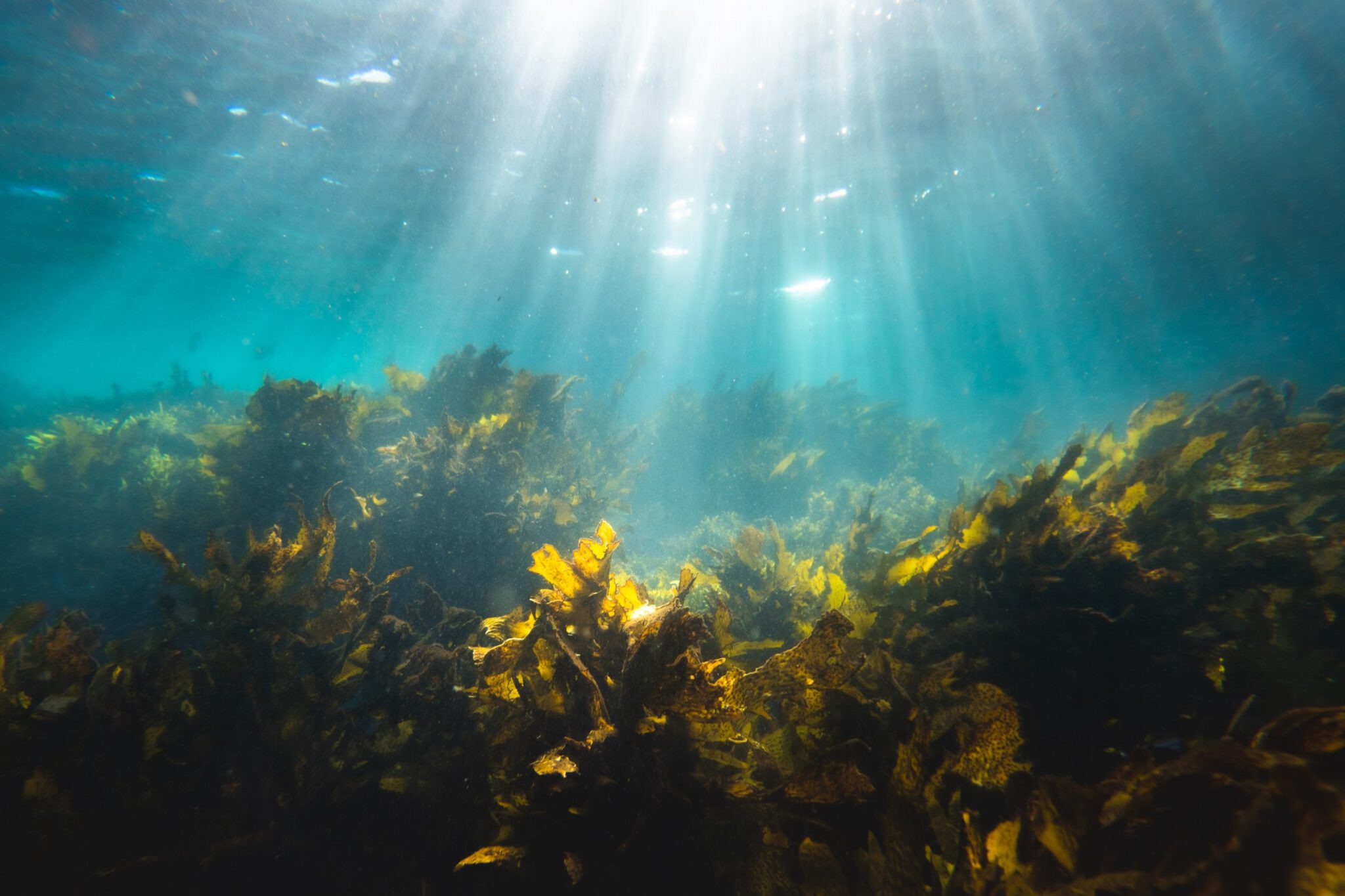
Photo by Silas Baisch on Unsplash.
Appreciating the animals of La Jolla requires recognizing the sanctuary in which they live—La Jolla’s Ecological Reserve and Underwater Park.
The underwater park encompasses 6,000 acres of submerged land, spanning from Torrey Pines State Natural Reserve to La Jolla Cove.
The protected reserve safeguards important ecosystems and habitats for the many marine species and land animals of La Jolla.
And to protect specific parts of the reserve, activities like fishing and surfing aren’t allowed.
The Underwater Park and Ecological Reserve is a true refuge where animals hunt for food, find shelter, and where many come to breed.
With monitored use, the underwater park can be enjoyed by the public and remain an essential natural resource for the animals of La Jolla for future generations.
Viewing the Animals of La Jolla Safely
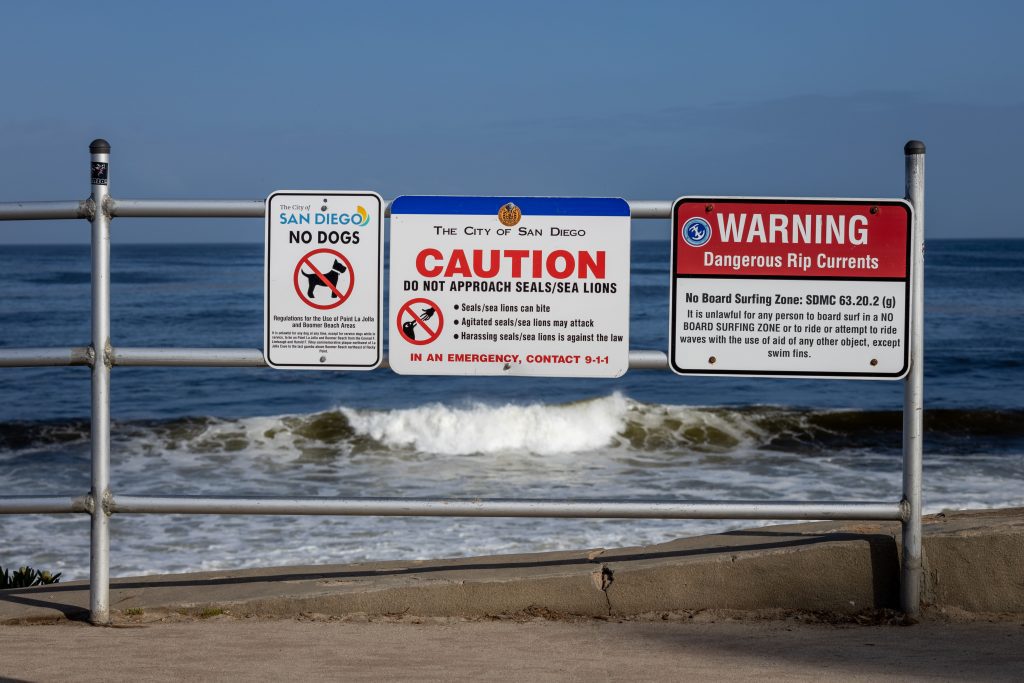
When visiting the animals of La Jolla, prioritizing their safety and yours will ensure you have the best experience possible.
Here are a few basics for viewing the animals of La Jolla safely:
- Maintain a safe distance to avoid causing stress for the animals.
- Respect designated viewing areas and signage.
- Avoid feeding the animals, intervening, or interrupting their natural behaviors.
- Practice Leave No Trace principles to keep the area clean and free from harmful materials, substances, or trash.
- Observe quietly or use binoculars or a telephoto lens to get a closer look at the animals.
The animals of La Jolla add to the charm and vibrancy of the La Jolla landscape and culture. Every day brings an exciting opportunity to see La Jolla’s diverse animal wildlife. Visitors to La Jolla can witness the harmony between land and sea and the sanctuary that the coast of La Jolla is for humans and animals alike.

